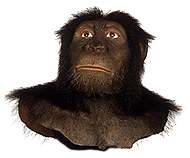
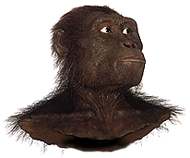
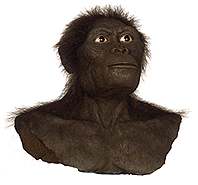
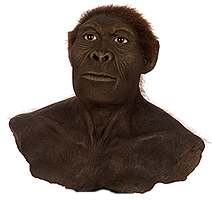
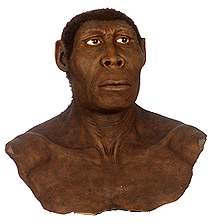
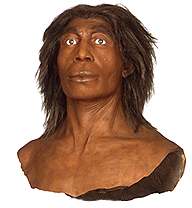
Introduction to Archaeology and Palaeoanthropology:
Humanity's Journeys
Tutorial Notes for 15 Nov 2006
VISIONS OF OUR ANCESTORS
When looking at reconstructions (drawings, sculptures, and film), consider:
What is fact?
What is representation?
Consider the following illustrations of hominids:






From top left: A. anamensis, A. afarensis, A. africanus, H. habilis, H. erectus, H.s.neanderthalensis. (With apologies to the website I swiped these from.)
Which aspects of these illustrations are based on known facts of palaeoanthropology/archaeology? Which are extrapolated? Which are completely invented?
Consider the skulls (left to right: A. afarensis, A. africanus, H. erectus, H. sapiens sapiens)




- fairly well known facts - basic facial structure, cranial capacity, tooth size etc. (but remember that the skulls are themselves often reconstructed from fragmentary and damaged fossils)
- facial reconstruction in bioarchaeology and forensics is based on some good modern data about tissue depths on the face, etc. (e.g. see http://www.shef.ac.uk/assem/1/mpefig01.html )
- but! in reconstruction drawings for the public: eye colour, skin colour, amount of hair, hair colour, hair style, facial expression -- all are extrapolated.
- also of interest in reconstruction drawings - facial expressions and gender
When we consider reconstruction images (drawings, film) of hominids 'in their social/natural habitats', we see even more areas of extrapolation and invention.
Examine the images below (some selected from works by Stephanie Moser and Melanie Wiber):
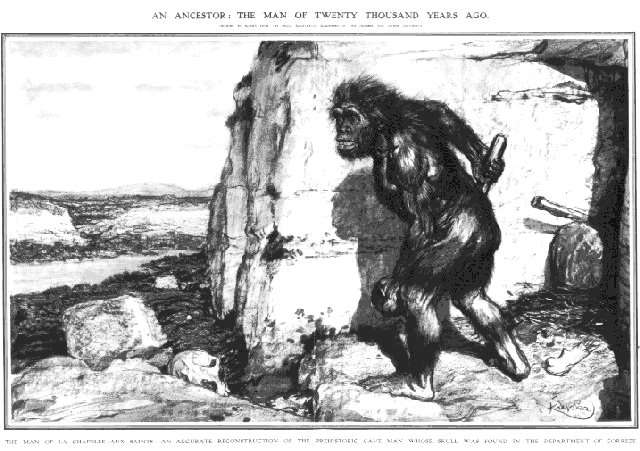
Above: by Kupka, based on Boule, 1909
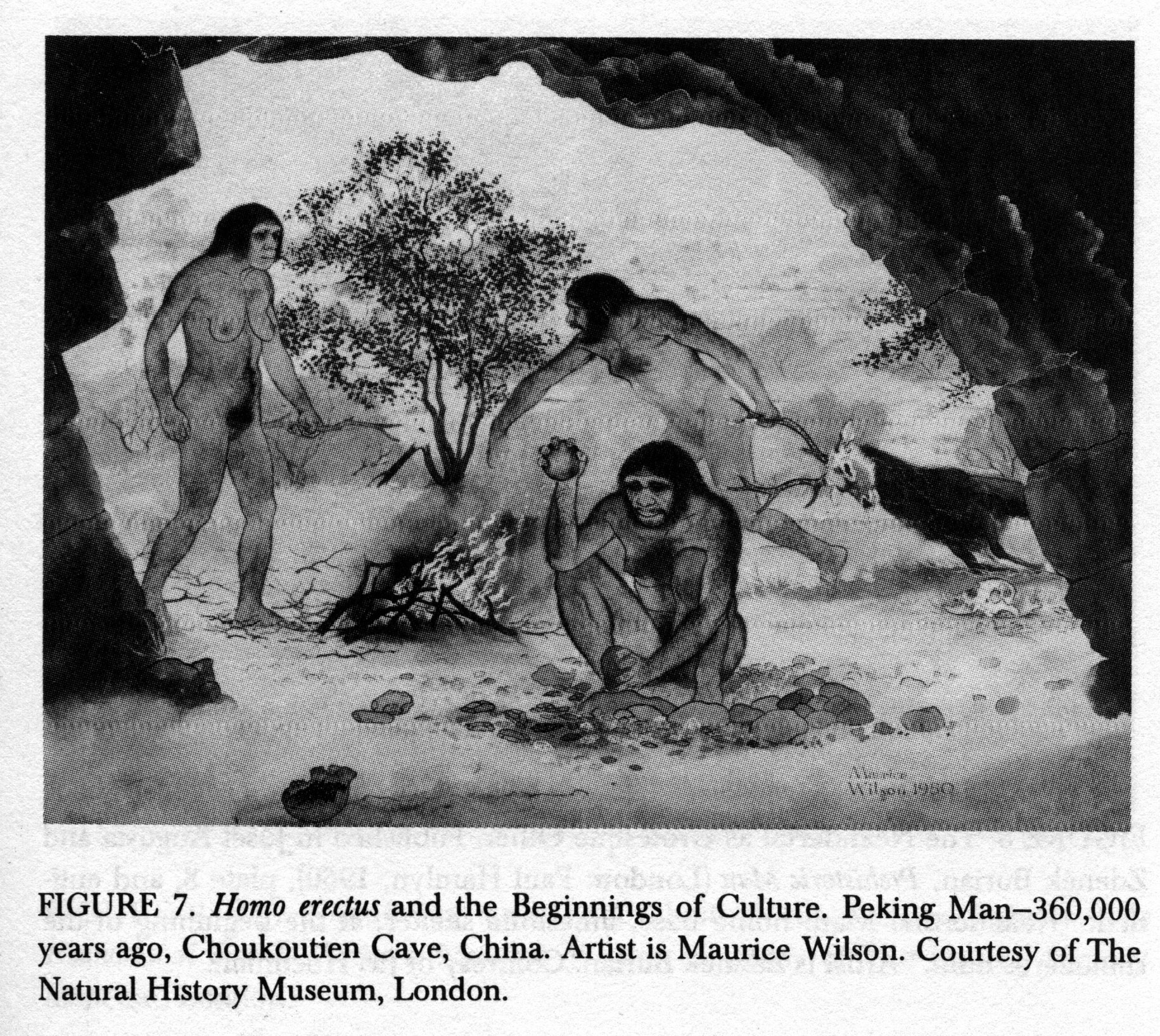
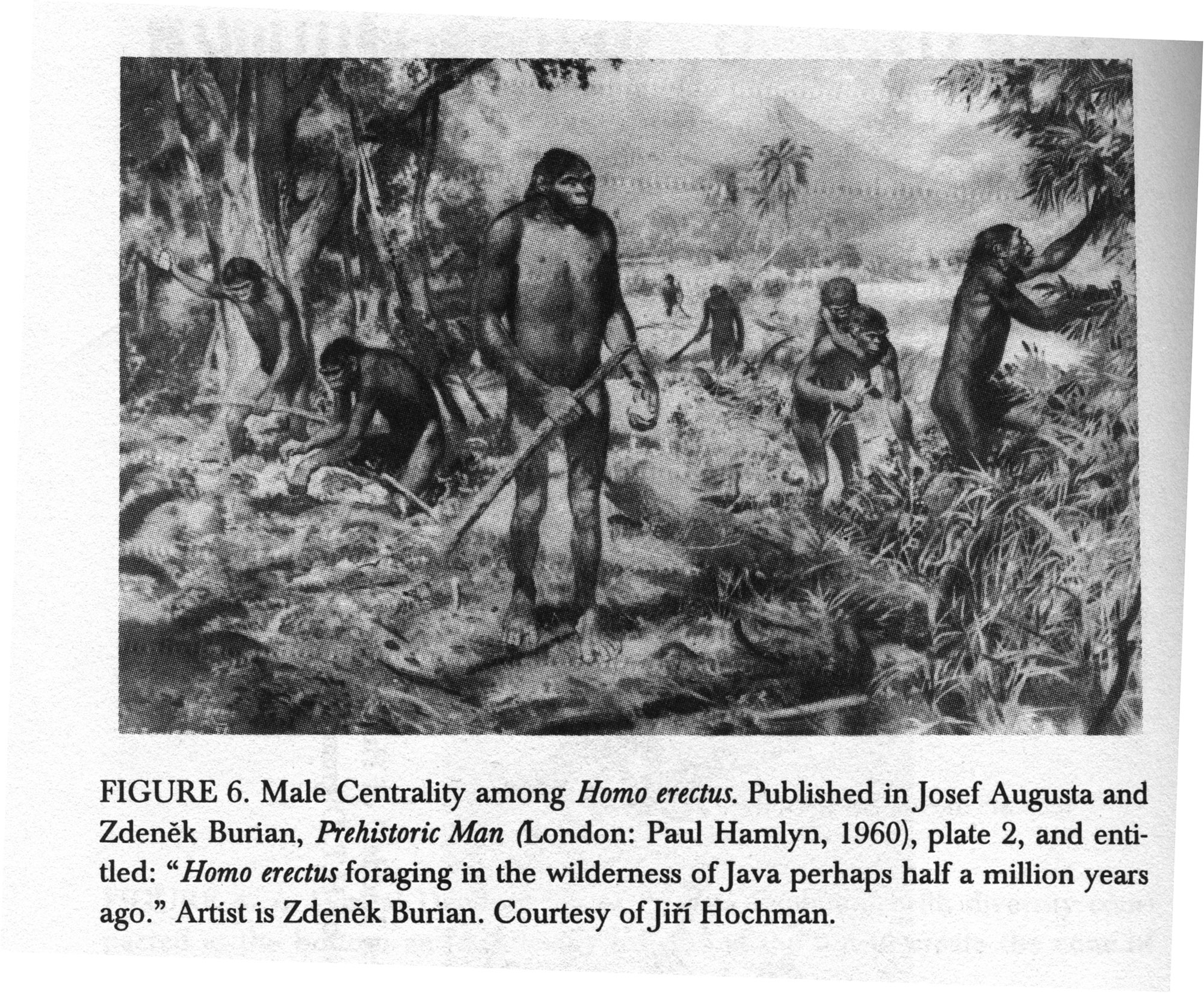

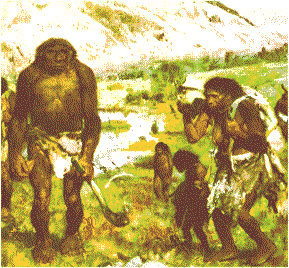
Zdenek Burian painting of Neanderthals. (mid 1900s)
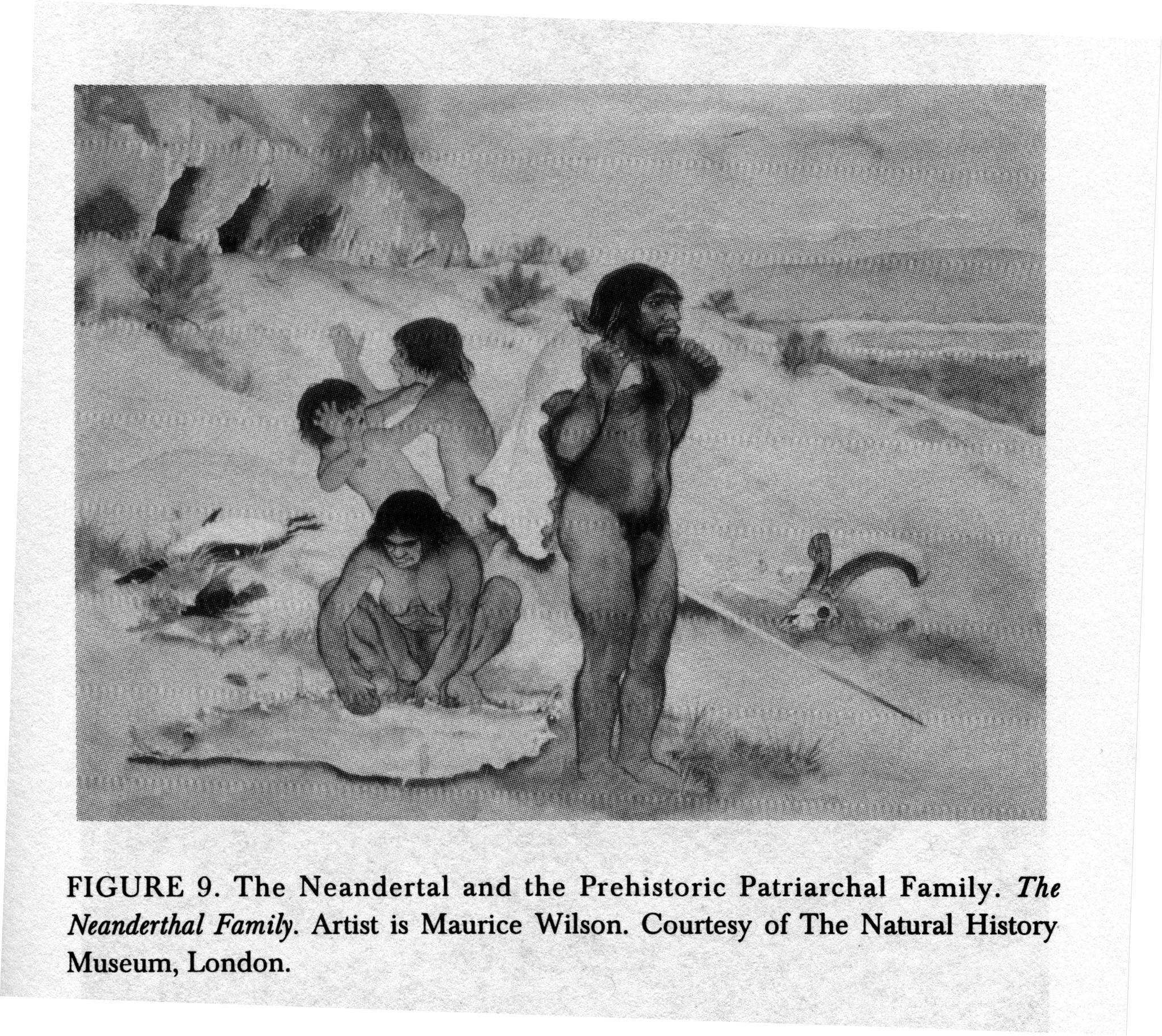
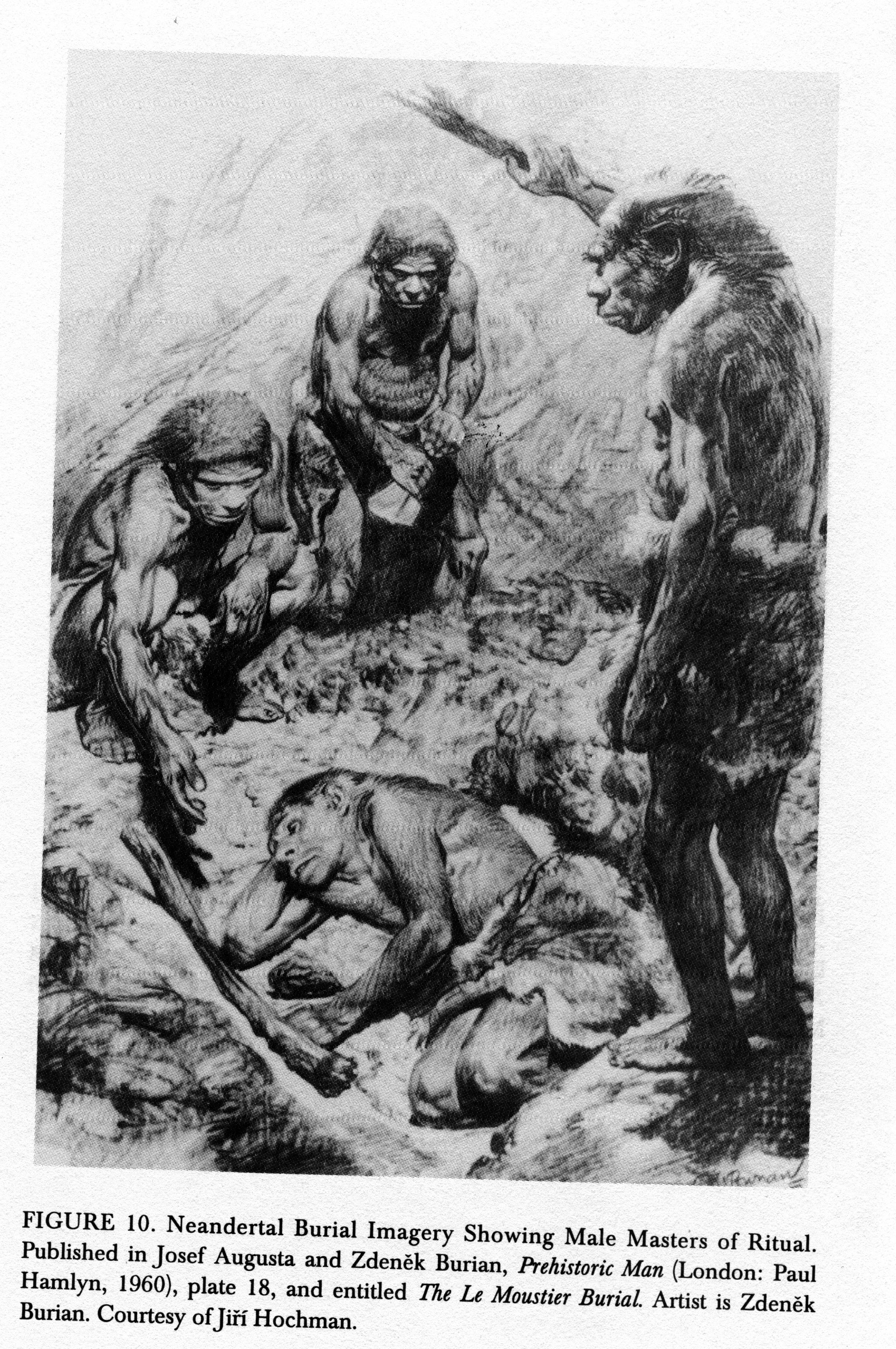
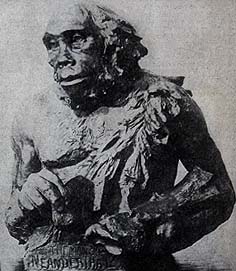
1928 reconstruction of Neanderthal

from H.G. Wells "The Outline of History" 1920
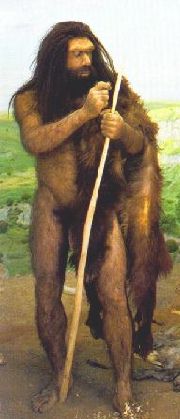
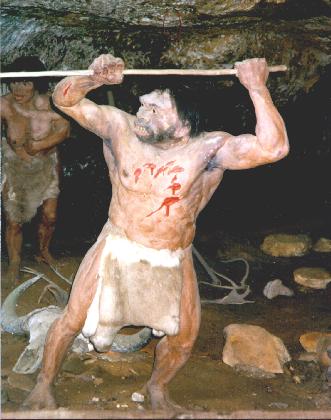
Left: From the cliff site of Roque St. Christophe - age uncertain... decades old
Right: Sculpture by John Holmes, done for the American Museum of Natural History in the 1990's.
(borrowed! http://www.talkorigins.org/faqs/homs/savage.html)
"Dissing the Neanderthal" in Chicago - sculptures since taken off display... http://www.research.ku.edu/explore/v1n2/neander1.html
(Another great collage: http://www.mun.ca/biology/scarr/Neandertal_drawings.jpg)
And.... evolving into Homo sapiens sapiens and thus into history...
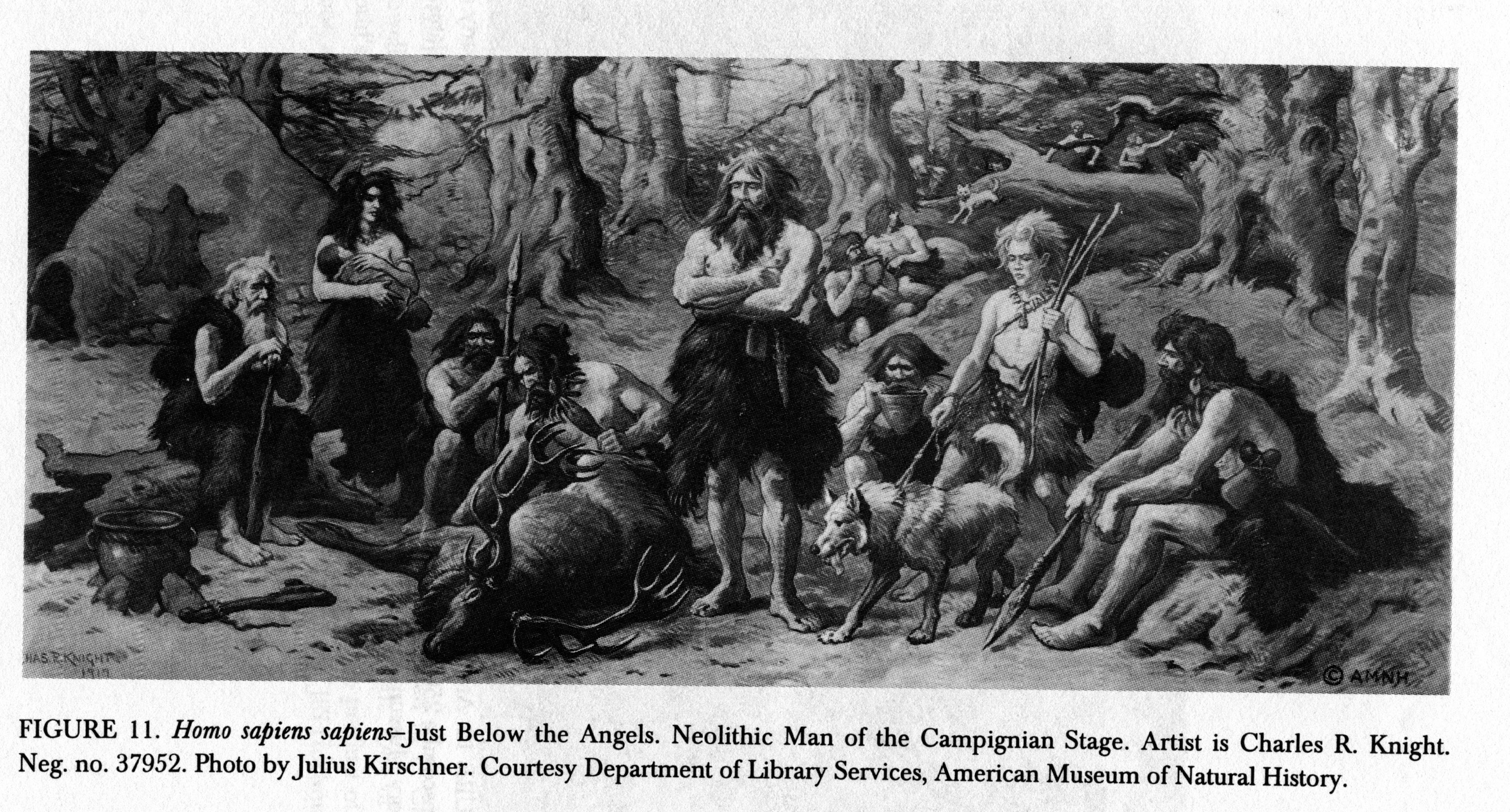
Archaeology scholars S. Moser and M. Wiber have examined these kinds of reconstruction illustrations and have noticed several key themes.
- there are 'icons' which tend to be present in these images, signifying 'primitivity' and a separation from us: spears, clubs, skulls, long hair, etc.
- the relative positioning and activities of males, females, and children say a lot about perceived gender relationships in the past -- and in the present. (males tend to be very 'Man the Hunter', are the ones with tools, weapons, are looking the most inventive, and are located centrally in the image)
N.B. Links to traditional ideas about whether civilization is better or worse than the original human lifestyle: Hobbes vs. Rousseau, "Hard Primitivism" vs. "Soft Primitivism", ascent vs. descent, the "real" human nature, etc.
So...
- representations aren’t neutral
- representations tell a story all their own… about how things were, how things are, and how things should be… and this story often reveals more about the person telling it than it does about the past!
- but archaeological research endeavours to give us representations that are carefully analyzed and based on data… not just made up!
EXAMPLE OF WHAT WE DO KNOW FROM ARCHAEOLOGICAL EVIDENCE
Judith Berman's article, "Bad Hair Days in the Palaeolithic" makes it clear that we DON'T have much evidence for the details of their appearance, but that we DO have some very old, traditional ideas about "wild men" and what hair signifies, nature vs. culture etc.
Real Palaeolithic Hair: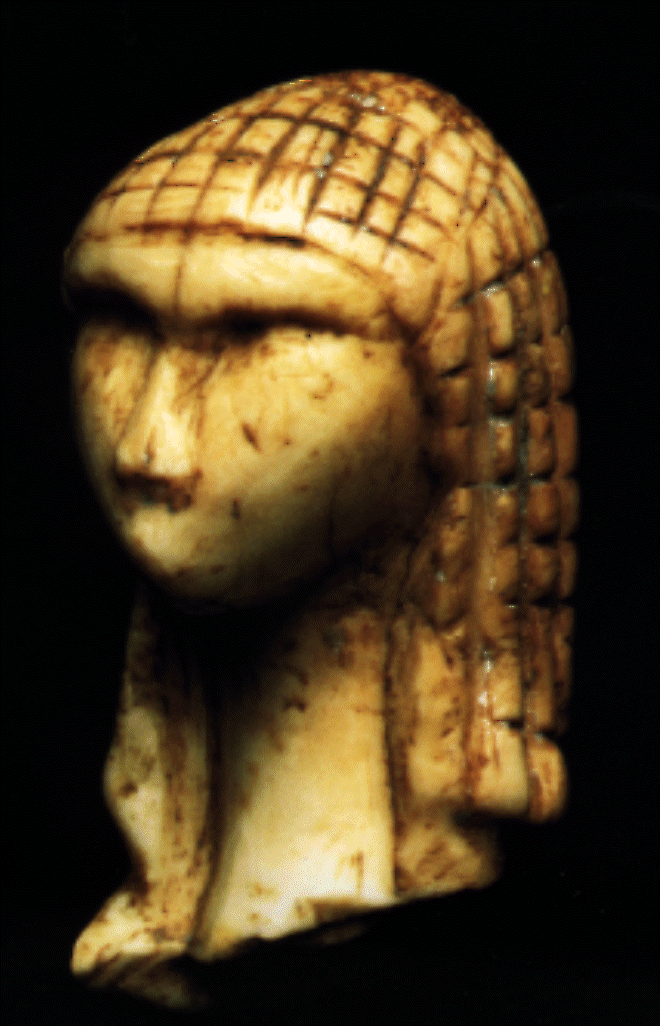
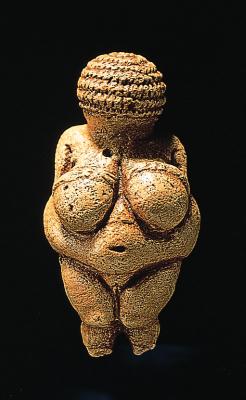
Venus of Willendorf, c.
24,000-22,000 BCE
Dame de Brassempouy, 23 000 BP, Ivory,
Musée
d'Antiquitées Nationales, France.
SO HOW ARE ILLUSTRATIONS OF PREHISTORIC PEOPLE CHANGING NOW? ARE THEY RESPONDING TO EVIDENCE?
Yes... More recent illustrations:
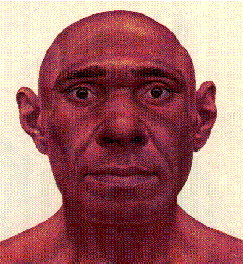
Work of scientific illustrator Jay Matternes, from the October issue of Science 81.
Put a hat on a Neanderthal...
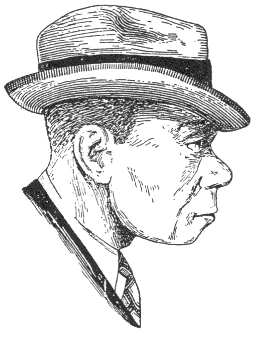
"The traditional earlier view of the Neanderthals as stooping 'ape-men' (which they were certainly not) was based largely on superstition and on the discovery of a few individuals with advanced bone disease at death. Carleton Coon's 1939 portrait of the Chapelle-aux-Saints Neanderthal type individual in modern dress makes the point that artists' impressions depend very much on superficial things like dress and haircut." - http://www.orc.soton.ac.uk/view/402/
....but the standard old icons and themes are often still present.
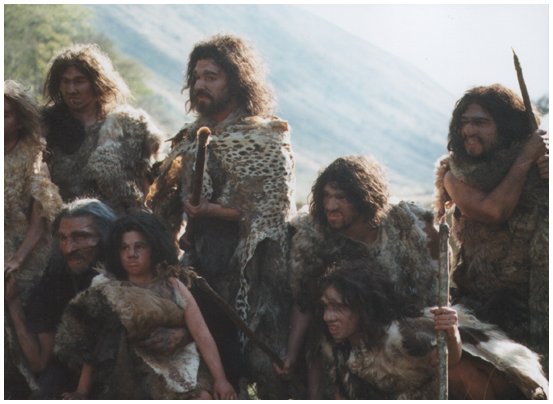
Channel 4, UK, recent series on Neanderthals -- reasonably good facial reconstruction, but many of the facial expressions and all the icons (hair, spears, furs) are the traditional 'caveman' equipment. Some of this is quite reasonable (they did have spears and live in caves, etc.) but some is extrapolation.
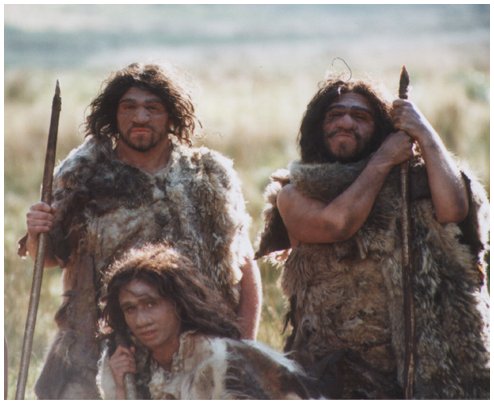
Recently, there has been more interest in Neanderthal females and children.
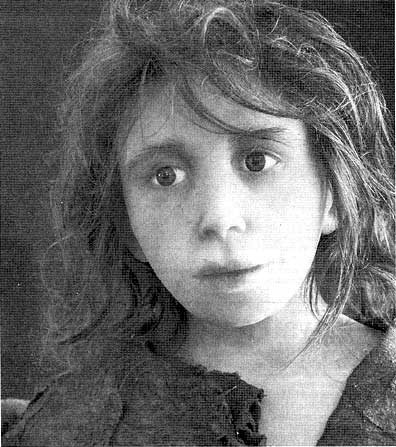
2001. Neanderthal child, computerized reconstruction.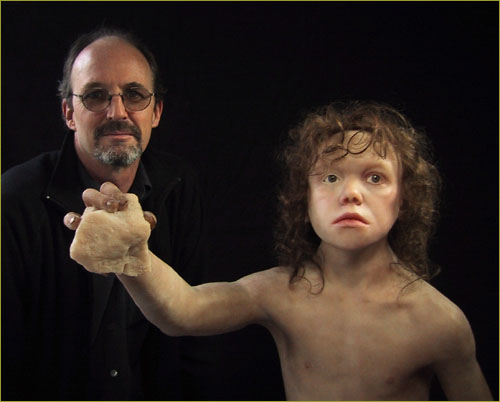
http://www.pbs.org/wgbh/nova/neanderthals/prod_03.html
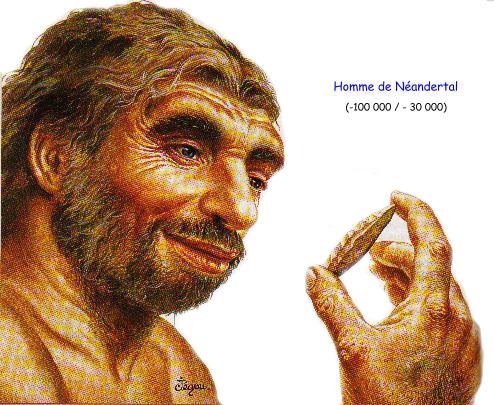
A rare image of a Neanderthal looking friendly, thoughtful, and coordinated!
http://perso.club-internet.fr/lauhic/Neander01.jpg
Early People In Films
- there is even more richness in the representations -- see people behaving and interacting -- most of this says as much about us as it does about the people we are representing. (Archaeologists know a lot about what Neanderthals really did, but to make a movie, directors/producers/writers/actors use a lot of artistic license and creativity.)
e.g. Many fantastic 'prehistoric' films: Clan of the Cave Bear, Quest for Fire, Caveman, One Million Years B.C., etc.
("fantastic" in the sense of interesting rather than necessarily accurate!)
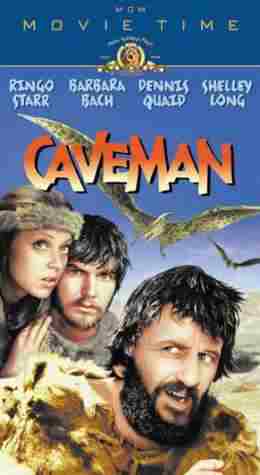
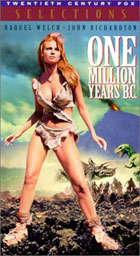
 Teenage Caveman, 1958
Teenage Caveman, 1958
Video Ad: "Nuclear holocaust has destroyed the world as we know it--and now the future of humanity is in the hands of TEENAGE CAVEMAN"
Perhaps each age has the caveman it needs... or the passionate Neanderthal it needs... (1953)
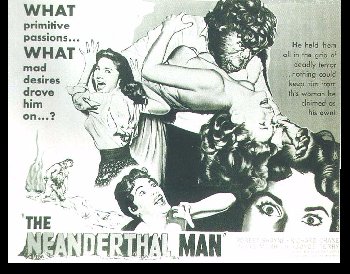
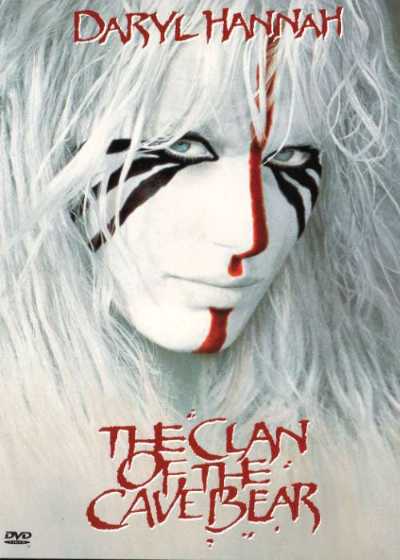
Movies that used more archaeological data and anthropological thought:
e.g. Quest for Fire, Clan of the Cave Bear
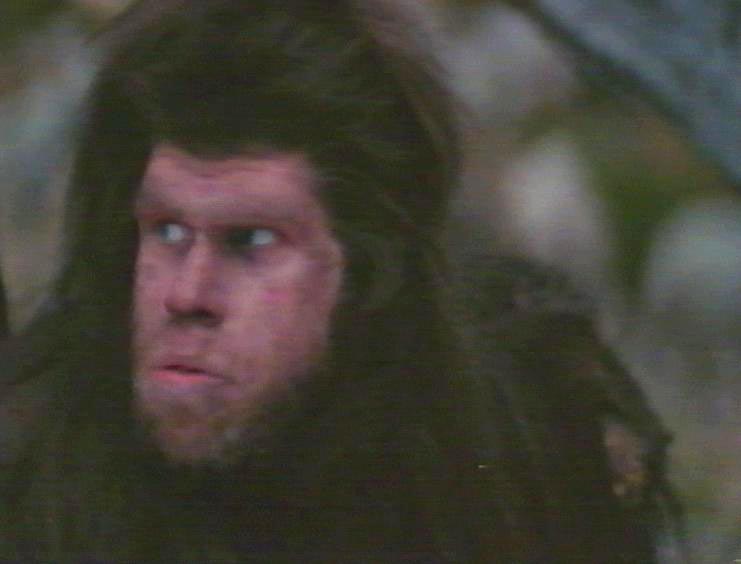
In film, one can usually see the icons that are present in still illustrations (above), and there is also a lot of extrapolation about:
- subsistence - films usually suggest that only men hunted, while women gathered (this is a caricature - not taking into account scavenging, group hunting, etc.)
- interpersonal relationships and group organization - films usually suggest that prehistoric society was very patriarchal, authoritarian leadership, frequent squabbles over dominance
- intergroup relationships - films usually suggest that there was constant conflict between groups
- Films also make major leaps about language use, spirituality, reasoning capacity, and motion patterns
- Films usually suggest that ancient life was miserable, a constant struggle against a hostile environment
Some of this extrapolation is reasonably based on information about anatomy etc., but much is rather tenuous.
Moser, Stephanie and Clive Gamble. 1997. “Revolutionary Images: The iconic vocabulary for representing human antiquity.” In B.L. Molyneaux, ed., The Cultural Life of Images: Visual Representation in Archaeology. London: Routledge. pp 184-212.
Moser and Gamble examine “ visual representation of archaeological knowledge, and in particular, the role of illustration in the study of the Palaeolithic” (1997:184). They “conclude that there is a very restricted iconic vocabulary for depicting the past” (1997:184). Common icons include: the cave, oversized flat and pigeon-toed feet, the club, body hairiness, stooped posture, docile expression, long head hair, stone tools, thick neck, animal skin garment, and crevasses (1997:187, 188).
Significance:
- “visual reconstructions… constitute theories about what happened in the past” (1997:186)
- “On one level reconstructions are faithful to the scientific data and arguments, making every effort to be accurate. However, on another level they have a life of their own…” (1997:186).
- origins of the iconic vocabulary are very old, e.g. Classical, and predate archaeology as a discipline (1997:206). Further expansion of the repertoire came with evolutionary theory (207).
- even archaeologically depictions of the past use this old iconic repertoire; visual imagery is so powerful that one cannot escape it, even when attempting to be as accurate as possible (209).
Thinking point:
Just keep your eyes open when looking at popular illustrations of the past. You’ll be amazed what you see when you really look, and ask “is there evidence for that? is this artistic license?”